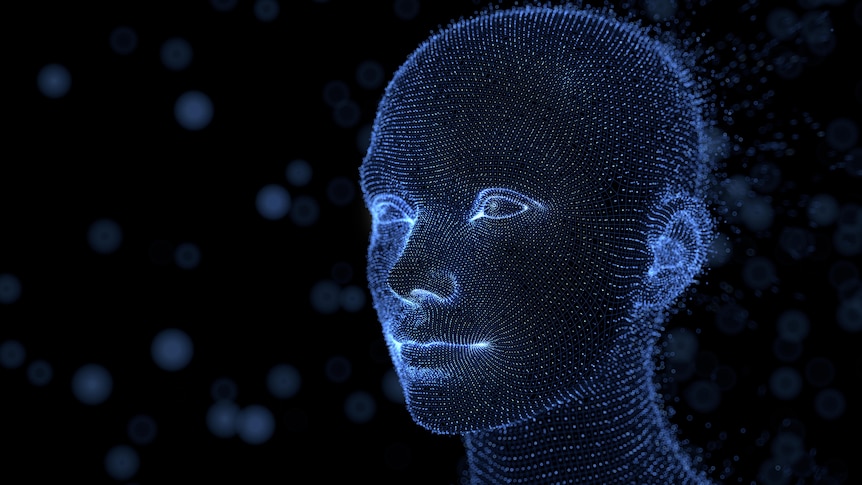The Future of Work: Robots As Colleagues, Not Just Replacements?
In our previous explorations, we’ve seen AI transforming various aspects of our lives, from healthcare to education to entertainment, and discussed AI being friend or foe. Today, we dive into the heart of our professional endeavors: the workplace. As AI automation reshapes industries, questions arise: are robots destined to replace us all, or can they become valuable colleagues?
AI: Efficiency & Collaboration on the Rise
Repetitive tasks automated
The traditional image of robots taking over the workplace is being replaced by a more collaborative vision. AI is poised to revolutionize work, not by eliminating human jobs, but by automating repetitive tasks and freeing us up for higher-level thinking. Imagine AI handling data analysis, report generation, and other time-consuming chores, while humans focus on strategic planning, creative problem-solving, and tasks requiring emotional intelligence and social skills. This collaborative approach, where AI acts as an efficient colleague, promises to boost productivity and unlock new potential in various industries. By embracing AI as an augmenting tool, we can create a future of work where humans and machines work together, achieving more than either could alone.
This shift towards human-AI collaboration presents both exciting opportunities and challenges. We need to prepare our workforce with the skills necessary to thrive in this new landscape, focusing on critical thinking, adaptability, and the ability to collaborate effectively with AI systems. By addressing these challenges and harnessing the power of AI responsibly, we can build a future of work that is not only more efficient but also more fulfilling for all.
Personalized learning & upskilling
The future of work is not just about robots, but also about empowering humans to thrive alongside them. Personalized learning and upskilling powered by AI are key players in this transformation. Imagine training programs that adapt to individual needs and learning styles, equipping workers with the skills they need to stay relevant in the face of constant evolution. AI can analyze data to identify knowledge gaps, curate learning materials, and provide targeted feedback, ensuring each individual receives the most effective training possible.
This personalized approach goes beyond traditional one-size-fits-all methods, fostering a dynamic learning environment that keeps workers adaptable and competitive in the ever-changing job market. However, implementing AI-powered training effectively requires overcoming challenges like data privacy concerns and ensuring equitable access to technology. By addressing these concerns and harnessing the power of personalized learning, we can create a future where continuous growth and development become the norm, empowering individuals and driving innovation across industries.
Decision-making support
Forget the Terminator, the future of work envisions AI not as a replacement, but as a trusted colleague, particularly in the realm of decision-making. Imagine having an AI assistant that tirelessly analyzes vast amounts of data, uncovering hidden patterns and trends that humans might miss. This data-driven intelligence can then be translated into actionable insights, presented in clear and understandable ways.
Think of it as having a personal data scientist on your team, offering objective perspectives and supporting your judgment with factual evidence. This translates to quicker, more informed decisions, minimizing the risk of bias and paving the way for greater accuracy and efficiency.
However, integrating AI into decision-making processes requires careful consideration. We must ensure that algorithms are free from bias and adhere to ethical standards. Additionally, human expertise and intuition remain crucial. Ultimately, the future lies in a collaborative approach where AI empowers human decision-makers, leading to better outcomes for individuals and organizations alike.
But what about job displacement and skill gaps?
Transition, not elimination
While the rise of robots and AI in the workplace promises efficiency and collaboration, it also ignites concerns about job displacement and widening skill gaps. It’s crucial to remember that this transformation doesn’t equate to job elimination, but rather a shift and transition. While some repetitive tasks might be automated, new opportunities will arise requiring different skillsets and a focus on adaptability.
Imagine doctors freed from administrative tasks by AI assistants, allowing them to dedicate more time to patient care.
Similarly, imagine creative roles evolving alongside AI tools, fostering collaboration and pushing artistic boundaries.
This transition, however, requires proactive measures. Upskilling and reskilling initiatives become essential, equipping individuals with the skills needed to thrive in the new job market. By embracing adaptability and investing in continuous learning, we can ensure that the future of work is not just efficient, but also inclusive and empowering for all.
Lifelong learning is key
The fear of robots stealing our jobs might be overblown, but the changing landscape of work driven by AI requires us to adapt. While some roles might be replaced by automation, the future is about humans and robots working *together*. The key to navigating this transition lies in lifelong learning.
Imagine a world where AI assistants handle repetitive tasks, freeing humans to focus on higher-level thinking and creative problem-solving. To thrive in this environment, continuous reskilling and upskilling will be crucial. We need to embrace adaptability, learn new skills, and stay relevant in an ever-evolving job market. This doesn’t mean everyone needs to become a programmer; the focus should be on developing skills like critical thinking, collaboration, and emotional intelligence – things robots can’t easily replicate. By investing in continuous learning, we can ensure that the future of work is not just efficient, but also inclusive and empowering for all.
Ethical considerations
While robots as colleagues offer an exciting vision for the future, concerns around job displacement and biased AI algorithms demand careful consideration. While some jobs may evolve or even disappear due to automation, the focus should be on responsible management and fair solutions. Imagine a future where humans and robots collaborate, but displaced workers are offered reskilling opportunities and support to transition into new roles. This requires proactive measures from governments and organizations, including creating safety nets, investing in education and training programs, and ensuring ethical development and deployment of AI.
Furthermore, potential biases embedded in AI algorithms can lead to discriminatory outcomes in areas like hiring and performance evaluations. Addressing this requires transparency in algorithm development, ensuring diverse data sets, and ongoing monitoring for bias. Ultimately, ethical considerations are paramount. We must ensure that the future of work, driven by AI, is not only efficient but also equitable, inclusive, and protects the dignity and well-being of all individuals. By focusing on responsible management, fair solutions, and ethical development, we can ensure that this collaborative future benefits everyone.
The Future of Work: Partnering with AI
Embrace continuous learning
Forget the robot takeover, the future of work is about partnership. While robots and AI will automate repetitive tasks, humans will remain crucial for their creativity, critical thinking, and social skills. The key to thriving in this collaborative environment lies in continuous learning. Imagine a world where AI handles the grunt work, freeing humans to focus on higher-level thinking and problem-solving. To thrive in this new landscape, invest in skills like critical thinking, communication, and collaboration – things AI can’t easily replicate. Think outside the box, communicate effectively, and work seamlessly with others – these will be the hallmarks of success in the future. While technical skills are important, remember that the human touch will remain irreplaceable.
Embracing continuous learning doesn’t mean everyone needs to become a programmer. It’s about adapting your skillset. Be open to new experiences, seek out learning opportunities, and stay curious. Imagine lifelong learning becoming the norm, empowering individuals to navigate the ever-evolving job market. By focusing on continuous learning and developing uniquely human skills, we can ensure that the future of work is not just efficient, but also fulfilling and enriching for everyone.
Advocate for responsible AI adoption
While robots entering the workplace may raise concerns about job displacement, the future envisions them as partners, not replacements. Imagine a world where AI automates repetitive tasks, freeing human potential for creative problem-solving and strategic thinking. But this future needs to be shaped responsibly. We must advocate for fair and ethical implementation of AI technologies.
Work with your organization to ensure AI adheres to ethical principles. Push for transparency in algorithms and data usage, advocate for diversity and inclusion in development teams, and raise awareness about potential biases. Imagine a future where AI serves everyone, not just a select few. By holding organizations accountable and advocating for ethical AI adoption, we can ensure the future of work is not just efficient, but also equitable and beneficial for all.
Remember, AI is a tool, and like any tool, its impact depends on how we use it. By partnering with AI and advocating for its responsible development, we can create a future where humans and machines work together to achieve more than either could alone. This collaborative future requires active participation from everyone, from individuals to organizations, to ensure it benefits everyone. Let’s work together to build a future where AI complements, not replaces, our unique human strengths.
See AI as a tool, not a threat
Forget the dystopian visions of robots taking over. The future of work paints a different picture: one of human-AI collaboration. While AI will undoubtedly automate tasks, think of it as a powerful tool to enhance your human capabilities, not a competitor. Imagine AI assistants handling administrative burdens, freeing you to focus on complex problem-solving and strategic thinking. Picture AI tools analyzing data to generate insights, empowering you to make informed decisions with greater accuracy.
Instead of fearing job displacement, see AI as an opportunity to upskill and evolve. Focus on developing the unique human strengths that AI can’t replicate: critical thinking, creativity, emotional intelligence, and collaboration. Hone your communication skills to effectively convey your ideas and work seamlessly with AI colleagues. Embrace lifelong learning to stay relevant in the ever-changing job market. By shifting your perspective and embracing AI as a partner, you can unlock a future of work that is not only efficient but also fulfilling and enriching.
Resources for Workers
The future of work is rapidly changing, and many workers are concerned about how automation and artificial intelligence (AI) will impact their jobs. However, the future is not all about robots replacing humans. Instead, we are moving towards a future where humans and AI will work together as colleagues. This will require workers to develop new skills and adapt to the changing landscape.
There are a number of resources available to help workers prepare for the future of work. These include:
- Online courses and training programs: There are many online courses and training programs available that can help workers learn new skills, such as coding, data analysis, and project management.
- Community colleges and universities: Many community colleges and universities are offering new programs and courses that are designed to help workers prepare for the future of work.
- Professional development organizations: Professional development organizations offer a variety of resources and programs to help workers stay up-to-date on the latest trends and technologies.
- Government programs: Some governments are offering programs to help workers who have been displaced by automation.
Resources for Organizations
While organizations need to embrace automation and AI for efficiency, preparing for this evolving landscape requires proactive measures. Here are some key resources and strategies:
Upskilling and reskilling
- Invest in training programs: Equip your workforce with the skills needed to thrive in an AI-driven future. Focus on critical thinking, data analysis, problem-solving, and adaptability. Partner with online platforms, universities, or training institutes to offer relevant courses and workshops.
- Personalized learning: Utilize AI-powered learning platforms to deliver personalized training based on individual needs and skill gaps. This ensures efficient skill development and maximizes learning outcomes.
Leadership and culture
- Embrace a culture of lifelong learning: Encourage continuous learning within the organization. Promote upskilling opportunities and celebrate employee development.
- Foster adaptability and agility: Create a culture that embraces change and encourages experimentation with new technologies. Empower teams to quickly adapt to evolving needs and challenges.
- Develop ethical AI frameworks: Establish clear guidelines for the development and deployment of AI to ensure fairness, transparency, and responsible use.
Collaboration and partnerships
- Invest in collaborative tools: Implement tools that facilitate seamless collaboration between humans and AI, fostering effective communication and knowledge sharing.
- Partner with AI experts: Collaborate with AI specialists to ensure the responsible and effective integration of AI into your operations. Utilize their expertise for strategic guidance and implementation.
- Focus on human-centered design: When implementing AI solutions, prioritize human needs and ensure they complement human capabilities, not replace them.
Continuously adapt and evolve
- Monitor industry trends: Stay informed about the latest advancements in AI and automation, and their potential impact on your industry and workforce.
- Collect and analyze data: Regularly assess the effectiveness of your AI initiatives and workforce skills. Use data insights to identify areas for improvement and adapt your strategies accordingly.
- Communicate and engage: Communicate transparently with your workforce about AI adoption and its impact on their roles. Encourage open dialogue and address employee concerns effectively.
By embracing these resources and strategies, organizations can create a future-proof workforce that thrives alongside AI, unlocking new levels of efficiency, innovation, and success. Remember, the future of work is not predetermined – it is shaped by the choices organizations make today. Choose to prepare, collaborate, and adapt to ensure a future where humans and AI work together to achieve more than ever before.
Resources for Policymakers
The future of work, driven by automation and AI, presents both opportunities and challenges for policymakers. While robots aren’t replacing humans entirely, collaboration is key. Here’s how policymakers can prepare:
Upskilling and reskilling the workforce
- Invest in accessible training programs: Focus on skills like critical thinking, data analysis, and digital literacy to ensure everyone can adapt and thrive in the new economy. Partner with educational institutions and training providers to offer accessible and affordable programs.
- Support lifelong learning: Encourage continuous learning and skill development throughout careers. Consider tax breaks or subsidies for individuals pursuing relevant training programs.
Promoting ethical and responsible AI
- Develop clear AI governance frameworks: Establish ethical guidelines for AI development and deployment, addressing issues like bias, transparency, and accountability. Public consultations and collaboration with experts are crucial.
- Invest in AI research and development: Support research on responsible AI development, ensuring it benefits everyone and aligns with societal values.
Preparing for potential job displacement
- Design social safety nets: Create or strengthen safety nets like unemployment insurance and social programs to support workers transitioning between jobs due to automation.
- Invest in job creation initiatives: Focus on creating new jobs in sectors less susceptible to automation, like renewable energy or caregiving.
Promoting innovation and adaptation
- Invest in infrastructure and research: Upgrade infrastructure, including digital connectivity, to support the needs of the future workforce and emerging technologies.
- Facilitate collaboration between stakeholders: Encourage collaboration between businesses, education institutions, and government agencies to prepare for the future of work.
Transparency and communication
- Engage in open dialogue: Publicly discuss the impact of automation and AI on the workforce, addressing concerns and promoting understanding.
- Share data and insights: Facilitate the sharing of data and research findings among policymakers, businesses, and academia to inform policy decisions and strategies.
By proactively addressing these challenges and utilizing available resources, policymakers can help ensure a smooth transition to the future of work where everyone benefits from the potential of AI and automation. This future is not predetermined, but shaped by the choices made today. By investing in people, promoting ethical technology, and fostering collaboration, policymakers can build a future where humans and AI work together to create a more prosperous and equitable society for all.
Remember, the future of work is a blank canvas. Let’s collaborate with AI to paint a future of shared prosperity and human-centered progress.
Have you experienced AI in your workplace? What are your thoughts on its impact and potential? Share your stories and questions in the comments below!
Stay tuned for our next issue, where we’ll explore AI’s Impact on Our Daily Lives!
Sincerely,
The AI Revolution Team









